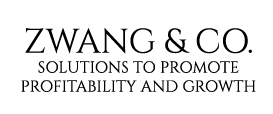In Part Two of this two-part article, David continues his review of Landa, the Nanographic Printing technology, and additional new development and offerings in preparation for drupa 2016.
In Part One, we covered in detail the ink and imaging process for Landa Nanography. Now we will dig into the details of the presses themselves, as well as a new technology for metallization.
Transport and Press Configurations
The media transport for Landa presses was jointly designed by Landa and Komori, and it is manufactured by Komori. This approach makes a lot of sense, since Komori has been producing presses since 1925. It allows Landa to focus on the imaging technology. This also translates into a paper feed, transport and delivery system design based on lots of experience over many years.
There are currently three press models that will be shown and sold during drupa. The two sheetfed models include the S10, which is designed for folding cartons, POP applications, etc.; and the S10P, which is a perfecting model designed for general commercial print applications. Both support coated and uncoated conventional (not pre-treated) substrates. The third model, the W10, is a web-fed model designed for flexible packaging and supports a large assortment of plastics, foils, boards, paper, etc.
All of the presses have the same imaging system as described in Part One of this article, and come standard with Landa’s Active Quality Management; an inline, closed loop quality control system with automatic correction for nozzle failures.
The Landa S10, which will be the first press to ship, is targeted at folding carton and sig and display print. This is a B1 press, supporting a maximum sheet size of 29.5 x 41.3 in, and a maximum print area of 28.7 x 40.6 in. The press supports a wide range of media thickness from 2.4 point to 32 point (60-800 grams). The press is rated at 6,500 sheets per hour (sph), with the option of increasing that to 13,000 sph with the high speed option. The high speed option uses the same amount of heads and print bars, and can be field upgradeable. This sheet size hits the sweet spot for most packaging and commercial print applications. It is also the format that needed to be introduced in order for many print service providers to seriously consider production inkjet technology of any kind. The optional coating unit supports both flood and spot coats, and both UV and aqueous coatings.
As of this writing, the only other B1 production inkjet press announced is the Heidelberg Primefire 106, which uses Dimatix SAMBA printheads, but with more conventional water-based inks and direct-to-substrate imaging. Landa believes that the S10 will provide cost-effective production for more than 50% of all packaging jobs. This figure was determined based on a crossover point of approximately 5,000 and more B1 sheets
The Landa S10P is a perfecting B1 press that is designed for general commercial printing. Like the Landa S10, it is a very familiar and comfortable size for print service providers. The specifications for media size and speeds are the same as the Landa S10. The big difference between the two models is that this is a perfecting press, where the media is flipped and run through the imaging unit twice. Since the images are dry when they hit the media, there is no need for any supplemental drying in the transport. It also means that two-sided printing or finishing can happen immediately. As a result, the print throughput for two-sided printing is 3,250 sph and 6,500 sph with the high speed option. If configured at 13,000 sph, this press can easily compete with most conventional offset presses.
The Landa W10 is the continuous web-fed feed model. It supports a web width of 41.3 inches. with a maximum roll diameter of 39 inches. The supported media thickness ranges from 4 point to10 point (10-350 microns). The press speed is 328 ft./min. and can be increased to 656 ft./min. with the high speed option. It has an unwinder and rewinder. It supports a wide variety of conventional boards, papers, plastics and foils. Landa projects that the crossover point with conventional print would be jobs of approximately 30,000 ft.







